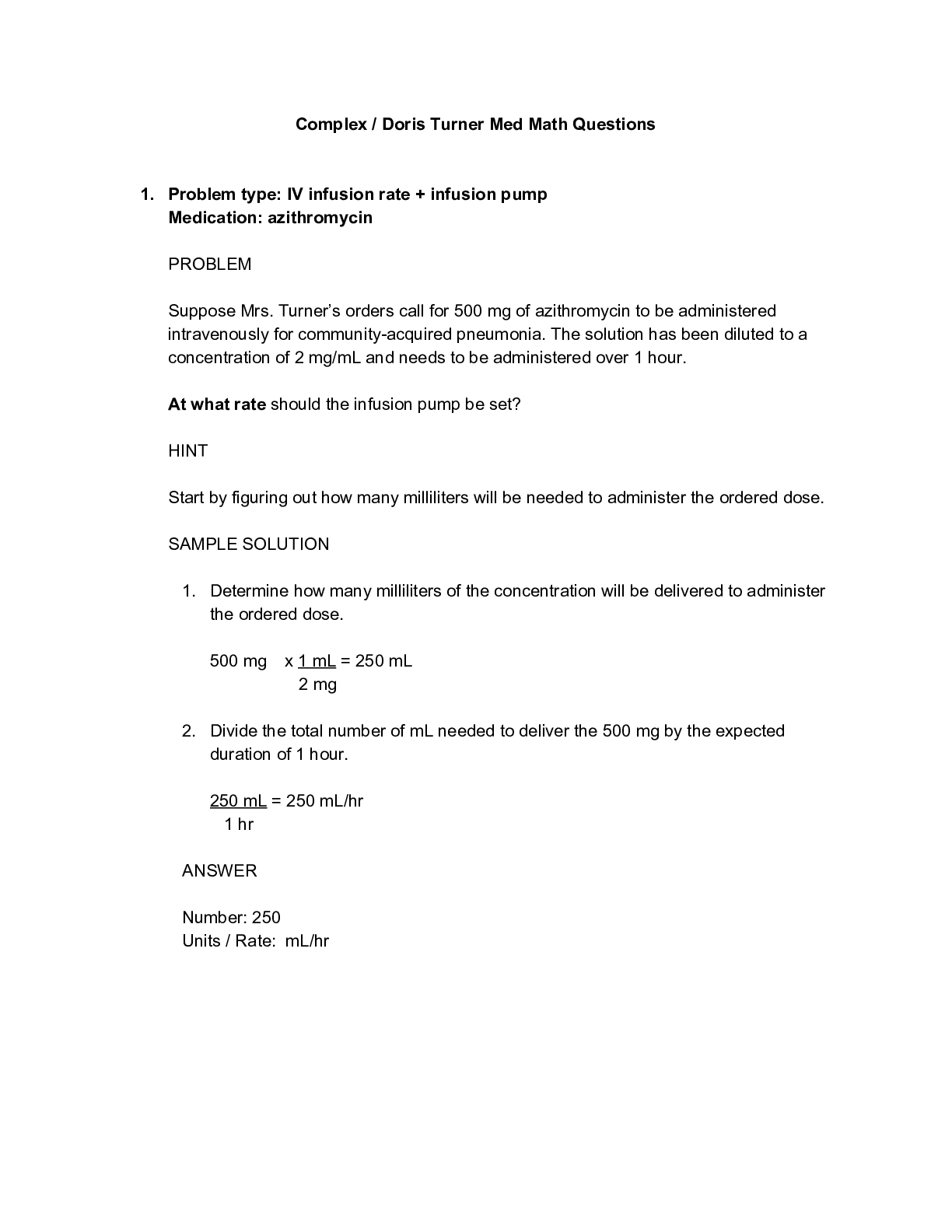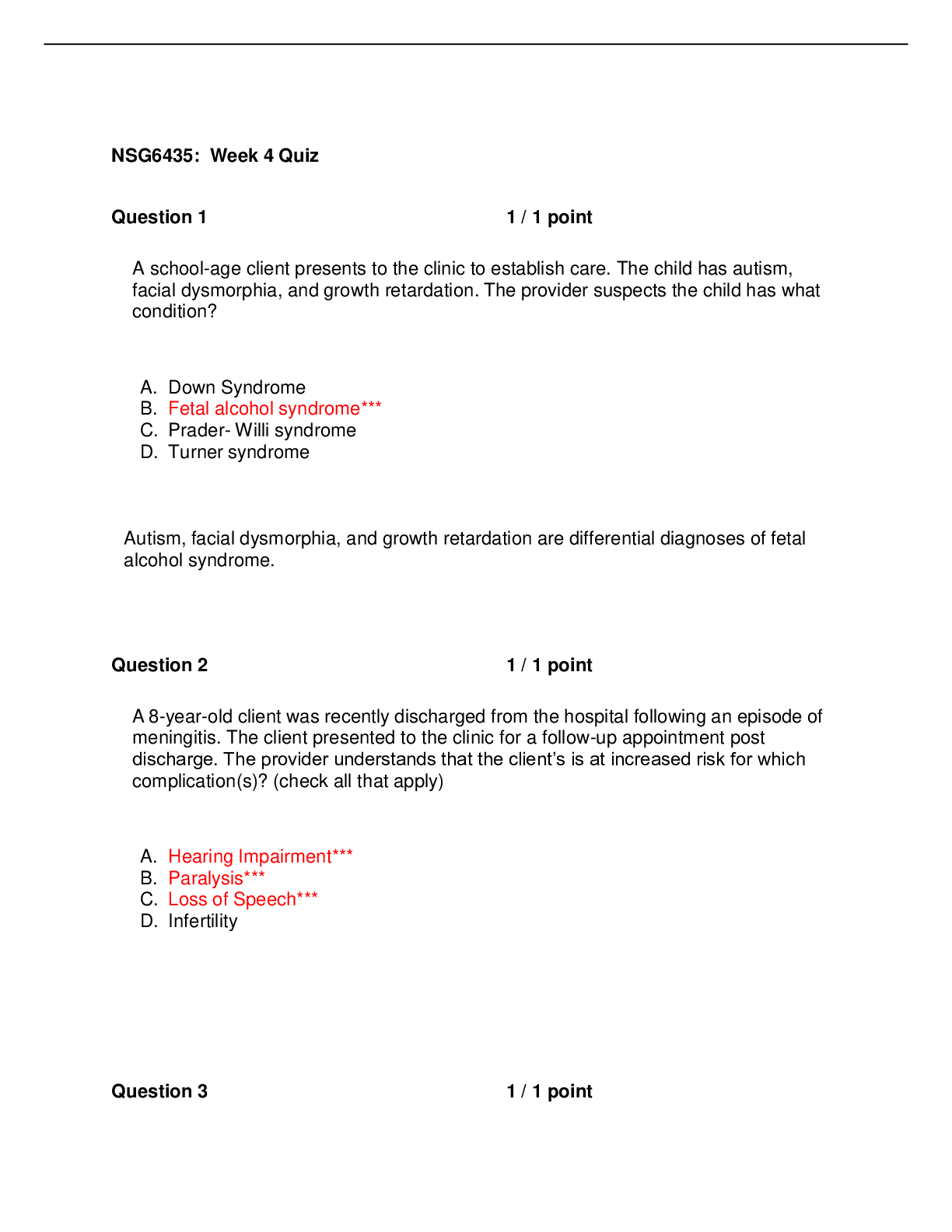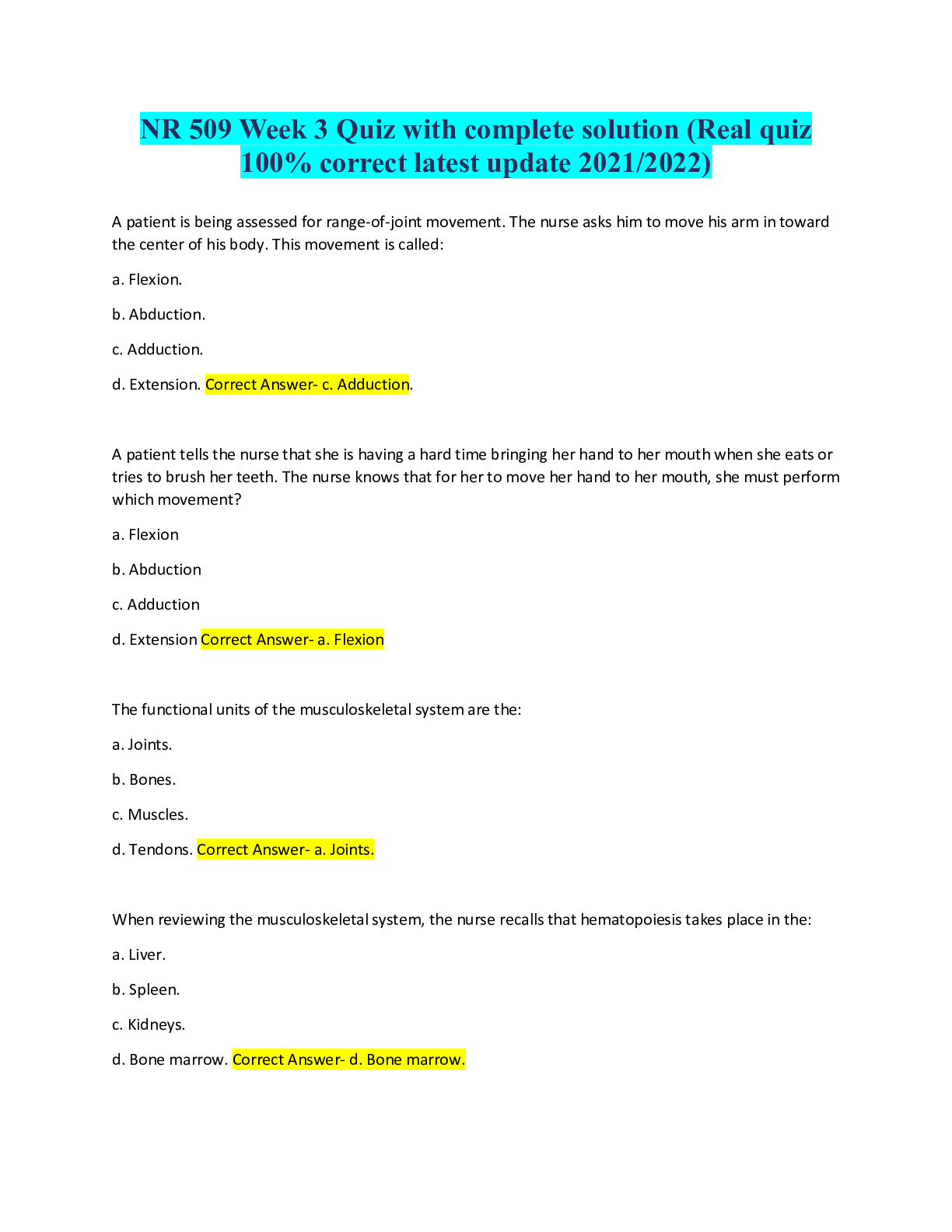Business > QUESTIONS & ANSWERS > CON 280 Source Selection and Administration of Service Contracts Week 2 Quiz 100% Correct Answers (All)
CON 280 Source Selection and Administration of Service Contracts Week 2 Quiz 100% Correct Answers
Document Content and Description Below
The Government received four proposals in response to its RFP. All of the proposals were deemed to be in the competitive range and you are now preparing for discussions. What is the Government requi... red to cover in those discussions? Selected Answer: a.The deficiencies, significant weaknesses, and adverse past performance information to which the offeror has not yet had an opportunity to respond. Answers: a.The deficiencies, significant weaknesses, and adverse past performance information to which the offeror has not yet had an opportunity to respond. b. Areas that were addressed during clarifications with two of the Offerors. c. Negotiations for increased performance (discovered during clarifications) beyond any mandatory minimums. d.The names of individuals providing past performance about that Offeror so the Offeror can adequately defend itself against any adverse past performance information. Question 2 2 out of 2 points Following the award of your contract, you are preparing to host a Post Award Orientation Conference to ensure that all parties clearly understand the contract. Which of the following items would likely be on the agenda? Selected Answer: b. The Payment process Answers: a. The acquisition planning and source selection process details b. The Payment process c. The worldwide Air Force organization. d. Pre-award survey process Question 3 2 out of 2 points The Government source selection team completed its initial round of evaluations and eliminated Connery from the competitive range. The documentation supporting this determination stated that Connery’s lack of logistical experience as a prime contractor, their over-reliance on a subcontractor, their questionable labor mix, and their lack of experience made it highly unlikely that Connery can successfully execute the project without an extensive revision of the proposal. What must the contracting officer do at this point? Selected Answer: c. Notify Connery of the basis for excluding/eliminating its offer; and that a proposal revision of its offer will not be considered. Answers: a. Notify all contractors to inform them that Connery has been eliminated from the competitive range. b. Notify Connery that they may only submit an unsolicited final proposal revision since they have been eliminated from the official competition. c. Notify Connery of the basis for excluding/eliminating its offer; and that a proposal revision of its offer will not be considered. d. Notify Connery of its status only after the final source selection decision is made. Question 4 2 out of 2 points Your IPT is discussing the appropriate rating methodology to use in its upcoming source selection using the tradeoff process. The requirement is for highly complex engineering services. The preponderance of the evaluators will be engineers or mathematically – inclined people. They have been discussing the numeric rating scale they used in the past. IAW the DOD Source Selection Procedures, which statement below is true regarding rating methodologies? Selected Answer: c. Adjectival ratings are required. Answers: a. Numeric scales are required. b. Only risk is rated numerically. c. Adjectival ratings are required. d. Color ratings cannot be used. Question 5 2 out of 2 points The Cost Evaluation Team for IOSS source selection is in the process of evaluating specific elements of each offeror’s proposed cost estimate to determine whether the estimated proposed cost elements are realistic for the work to be performed. Which statement is TRUE when evaluating competitive offers for realism? Selected a. For cost-reimbursement contracts, you must use cost realism analysis to Answer: determine the probable cost of performance for each offeror. Answers: a. For cost-reimbursement contracts, you must use cost realism analysis to determine the probable cost of performance for each offeror. b. For cost-reimbursement contract, it is NOT mandatory to use cost realism analysis to determine the probable cost of performance for each offeror c. Under no circumstances may you use cost realism analysis when evaluating fixed-price incentive contracts or other fixed-price contracts. d.For both cost reimbursement and fixed-price contracts you must adjust the offered prices if the results of your analysis show the price to be unrealistic. Question 6 2 out of 2 points The RFP you issued for maintenance services stated that the offers would be evaluated on a best value (trade-off) basis. The RFP stated that the non-cost/price evaluation factors combined were significantly more important than cost/price. The overall ratings were as stated below. Assuming the SSA determines that the differences in strengths between proposals does not warrant a cost/price premium, which offeror should the SSA select? Offeror Non- Cost/Price Cost/Price White Outstanding $1,500,000 Xenia Good $1,127,000 Yellow Unacceptable $1,000,000 Zeus Good $1,156,000 Selected Answer: b. Xenia Answers: a. White b. Xenia c. Yellow d. Zeus Question 7 2 out of 2 points After the closing date for receipt of proposals, Yellow informed the contracting officer (KO) that there was a problem with their proposal. Yellow acknowledged that its proposal did not satisfy solicitation requirements and requested that it be allowed to offer a different design to satisfy the solicitation requirements. The KO conferred with Yellow and permitted them to revise their proposal. Which statement is TRUE regarding the KO’s action? Selected Answer: a. Unless the other offerors were allowed an opportunity to revise their proposals, the KO’s decision represents an unfair competitive advantage and is a protestable action. Answers: a. Unless the other offerors were allowed an opportunity to revise their proposals, the KO’s decision represents an unfair competitive advantage and is a protestable action. b. Even if the agency found Yellow’s proposal to be technically unacceptable, the agency was still required to consider the Yellow’s lower proposed price in its tradeoff decision. c. The KO’s decision to accept a revised proposal from Yellow was appropriate even if the identified concerns were deficiencies and could only have been corrected through discussions. d. The KO’s decision was proper since Yellow was only attempting to clarify its proposal and clarifications may be used to cure proposal deficiencies or material omissions, materially alter the technical or cost elements of the proposal, or otherwise revise the proposal. [Show More]
Last updated: 2 years ago
Preview 1 out of 14 pages

Buy this document to get the full access instantly
Instant Download Access after purchase
Buy NowInstant download
We Accept:

Reviews( 0 )
$13.50
Can't find what you want? Try our AI powered Search
Document information
Connected school, study & course
About the document
Uploaded On
Feb 03, 2022
Number of pages
14
Written in
Additional information
This document has been written for:
Uploaded
Feb 03, 2022
Downloads
0
Views
82













.png)



.png)





